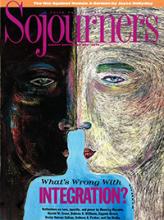THE QUESTION OF integration has proven to be a considerably more complex matter than many of its advocates initially suspected when the United States Supreme Court handed down its opinion in the Brown v. Board of Education of Topeka on May 17, 1954. At that time the court of Chief Justice Earl Warren held that "in the field of public education the doctrine of 'separate but equal' had no place."
The day after the decision was handed down The New York Times ran a quite revealing story. It quoted Thurgood Marshall, who was then one of the principal legal strategists in the Brown case, predicting that as a result of this decision school segregation would be stamped out in no more than five years. He also informed The Times that by 1961 all forms of segregation in the United States would be eliminated.
Marshall's comments, which were not unrepresentative of much of middle-class leadership of the period, were based on two assumptions. The first assumption was that the American system was a racially democratic polity. This view also held that the United States under its current economic arrangements was committed to guaranteeing the civil rights of all its subjects, regardless of race, creed, or color. This belief, however, was maintained in the face of considerable historical and empirical evidence to the contrary.
The second assumption was somewhat more complex. The pro-integrationist legal strategy, which Marshall helped organize, was predicated upon a very particular philosophic understanding of the nature of equality. This view assumed that integration was the most desirable form of social equality, that social rights were indivisible from civil rights or political rights, and that absolute integration was to be preferred over political and institutional autonomy.
Read the Full Article
